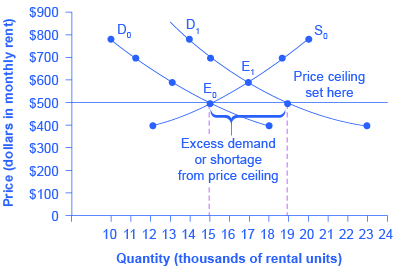The government has mandated a minimum price but the.
Price floor is binding when it is set.
A legal maximum price price control.
Binding price floor when a price floor is set above the equilibrium price and results in a surplus price ceiling.
A legal minimum price for a product.
An ineffective non binding price floor below equilibrium price.
A binding price floor is a required price that is set above the equilibrium price.
Government laws to regulate prices instead of letting market forces determine prices price floor.
T f workers determine the supply of labor and firms determine the demand for labor.
The government is inflating the price of the good for which they ve set a binding price floor which will cause at least some consumers to avoid paying that price.
In the first graph at right the dashed green line represents a price floor set below the free market price.
Governments usually set up a price floor in order to ensure that the market price of a commodity does not fall below a level that would threaten the financial existence of producers of the commodity.
This has the effect of binding that good s market.
The latter example would be a binding price floor while the former would not be binding.
Types of price floors.
A price floor is binding when it is set.
Governments can set prices on certain goods artificially high and create economic disequilibrium and binding price floors on these goods through the laws they enact.
A non binding price floor a binding price ceiling.
In this case the floor has no practical effect.
A price floor is an established lower boundary on the price of a commodity in the market.
A price floor could be set below the free market equilibrium price.
A non binding price floor.
Setting binding price floors.
Above the equilibrium price causing a surplus.

